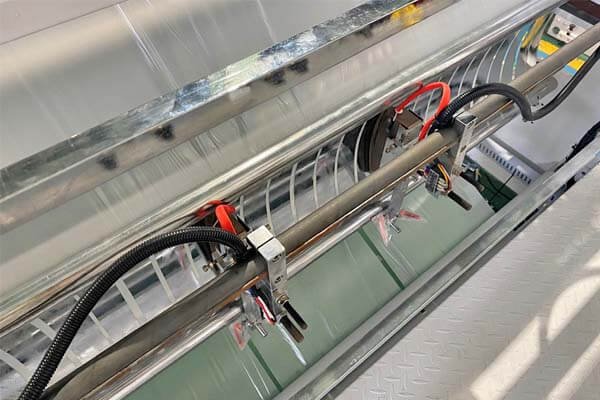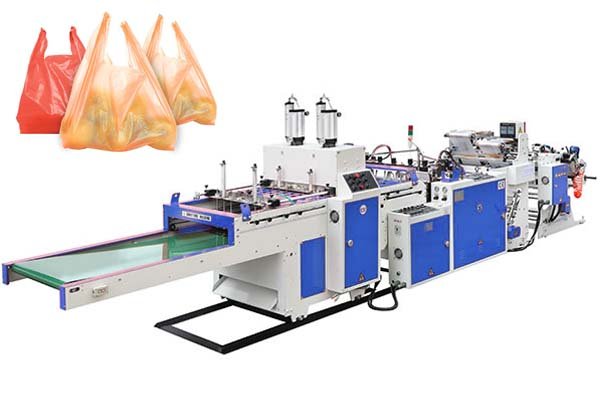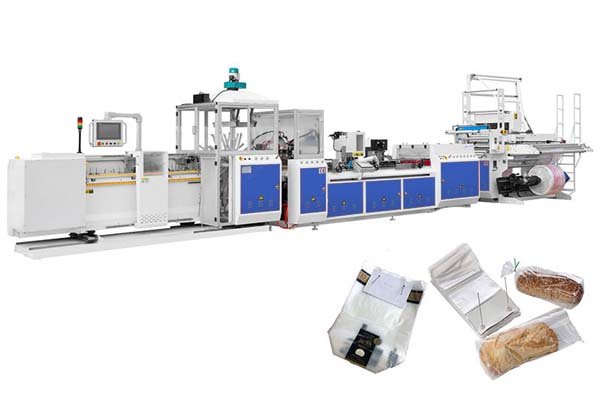
Are you struggling to keep up with high-volume packaging demands? Manual bagging is slow and creates bottlenecks. A Wicketer machineis the solution to boost your line's speed and efficiency.
A Wicketer machine is a specialized packaging machine designed to hold and dispense stacks of bags on metal pins, called wickets. It uses a blower to open each bag, making it simple for an operator to quickly insert a product and tear the filled bag away.
This system is a game-changer for semi-automated packaging g lines. The core of its design is the "wicket," a set of metal arms or pins. Pre-made bags with corresponding holes are stacked onto these wickets in bundles. The machine then isolates the top bag and often uses a small jet of air to blow it open. This prepares the bag for an operator to manually or semi-automatically load the product. After filling, the bag is easily torn off along a perforation, and the next bag is immediately ready.
This process dramatically increases the speed of manual packing. It is ideal for products that are difficult to handle with fully automatic systems. We see this technology heavily used in bakeries for bread, in agriculture for fresh produce, and for hygiene products like diapers. The machine standardizes the bagging process. This means more consistent output and less operator fatigue, which are key goals for any production manager.
What is a Wicket bag?
Now you know about the machine. So, what kind of bag does it use? The bag itself is a special design that is essential for the entire system to work smoothly.
A wicket bag is a type of pouch or bag made with two or more holes punched into its lip. These bags are stacked together and held on the metal arms (wickets) of a Wicketer machine, allowing for quick, one-by-one dispensing for manual filling.
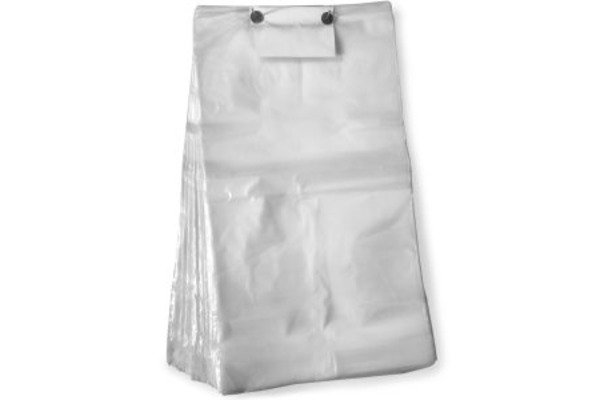
The Anatomy of a Wicket Bag
Wicket bags are more than just simple plastic bags. Their design includes specific features that make them perfect for high-speed, semi-automated environments. Understanding these features helps you see why they are so effective.
Key Design Features
- Wicket Holes: These are the most important feature. Usually, there are two holes punched through the extended lip of the bag. The size and spacing of these holes must match the machine's wicket arms perfectly for a secure fit.
- Material: We typically produce these bags from materials like Low-Density Polyethylene (LDPE), Cast Polypropylene (CPP), or Biaxially-Oriented Polypropylene (BOPP). The choice depends on the product. For example, CPP is used for bread bags because of its high clarity and crispness. LDPE is great for bags that need more flexibility, like for produce.
- Perforations: A clean tear-off is critical for speed. A perforation line is created just below the wicket holes. This allows the operator to swiftly remove the filled bag from the stack without disturbing the next one.
- Optional Gussets: For bulky items like a loaf of bread or a whole chicken, bottom gussets can be added. A gusset is an extra fold of material at the bottom of the bag. It expands to give the bag a more rectangular, three-dimensional shape, allowing it to hold more.
How are Wicket Bags Made?
At BagMec®, we have specialized machines precisely for this purpose. The Wicketer Bread Bag Machine is one of our flagship models. The process involves several key steps:
- Film Unwinding: A large roll of plastic film is unwound and fed into the machine. Our machines use a "Smart Tension Control" system to keep the film perfectly flat and stable.
- Folding and Sealing: The film is folded to the correct bag width. Then, heated sealing bars create the side seals, forming the basic bag shape. For gusseted bags, a special folding device creates the bottom gusset before sealing.
- Hole Punching: This is the critical step. A precision die-cutting unit punches the wicket holes into the bag's lip. The alignment must be perfect, so we use laser calibration to ensure accuracy within a tolerance of ±2%.
- Perforation and Stacking: A blade creates the tear-off perforation. Finally, the bags are cut and stacked onto collecting pins that mimic the machine's wickets, ready to be boxed and sent to the customer.
How does a Wicketer Machine Work?
Understanding the step-by-step operation of a Wicketer machine shows why it is so efficient. It creates a simple, repeatable workflow that an operator can master quickly.
A Wicketer machine works by holding a stack of wicketed bags securely on pins. An air blower opens the front bag, an operator inserts the product, and then tears the filled bag away at the perforation. The cycle immediately repeats for the next bag.
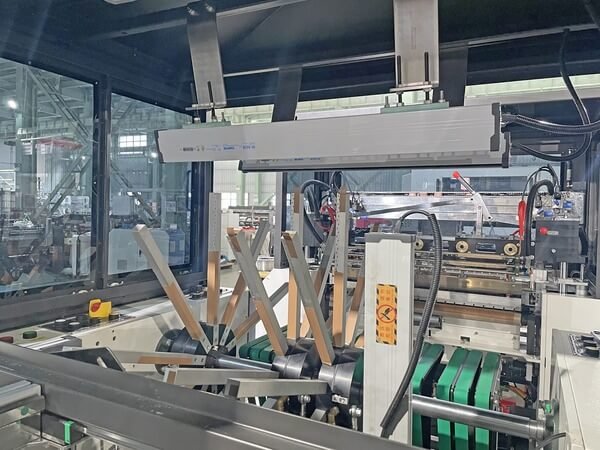
A Deeper Look at the Operational Cycle
The entire process is a smooth, continuous loop. Let's break it down into the core stages that happen on our BagMec® Wicketer machines.
Stage 1: Loading the Bags
The operator takes a stack of wicketed bags, typically bundled in 100 or 250, and slides the holes over the machine's metal wicket arms. These arms are adjustable to accommodate different bag sizes. A clamp or rubber stopper holds the stack firmly in place.
Stage 2: Automatic Bag Opening
Once the machine starts, a small, adjustable arm with an air nozzle moves over the top bag. It directs a gentle puff of air into the bag's opening. This simple action is enough to blow the front of the bag open, making it ready for filling. This removes the clumsy step of an operator having to find and open the bag by hand.
Stage 3: Product Insertion
This is where the semi-automatic nature comes in. An operator, positioned at the front of the machine, takes the product and inserts it into the open bag. For some applications, this step can be assisted by a synchronized conveyor belt that brings the product directly to the operator at the right time.
Stage 4: Tearing Off and Sealing
After the product is inside, the operator pulls the filled bag downwards or forwards. The bag tears cleanly away from the stack at the pre-made perforation. The rest of the stack remains securely on the wickets. Depending on the product, the filled bag may then be placed on another conveyor for sealing, or it might be closed with a twist-tie.
This cycle is incredibly fast. An experienced operator on a well-maintained machine can pack up to 40-60 bags per minute.
What Industries Benefit Most from Wicketer Machines?
The versatility of Wicketer machines makes them valuable across several industries. Any business that needs to package individual items quickly and consistently can benefit from this technology.
Industries that benefit most from Wicketer machines include bakeries, fresh produce packers, hygiene product manufacturers, and apparel companies. They are ideal for high-volume, semi-automated packaging of items like bread, apples, diapers, and T-shirts.
Industry-Specific Applications
We have designed and delivered Wicketer machines for clients in many sectors. Here is a breakdown of how they are used.
The Bakery Sector
This is the classic application for Wicketer machines.
- Products: Sliced bread, buns, bagels, croissants, and other pastries.
- Why it works: Baked goods can be delicate. The gentle manual insertion prevents damage that fully automated systems might cause. Our machines, like the Wicketer Bread Bag Machine, can handle the high-clarity CPP and LDPE bags that keep products fresh and appealing.
The Fresh Produce Sector
Speed and durability are key for packing fresh produce.
- Products: Apples, potatoes, oranges, carrots, and other fruits and vegetables.
- Why it works: Wicketed bags can be made from stronger films to handle the weight of produce. Some bags are also designed with vent holes to allow the product to breathe. The semi-automatic process allows for a final visual inspection of the produce as it's being packed.
Hygiene and Medical Products
Consistency and cleanliness are non-negotiable in this industry.
- Products: Diapers, sanitary napkins, wet wipes, and medical disposables.
- Why it works: We build our diaper bag making machines to meet strict hygiene standards, sometimes incorporating anti-contamination designs. The controlled, one-bag-at-a-time dispensing helps maintain a clean packaging environment. Carlos Mendez in Mexico needed just such a system for his medical supplies.
Apparel and Textiles
Wicketed bags provide a professional and efficient way to package clothing.
- Products: T-shirts, underwear, socks, and other small garments.
- Why it works: The clear bags offer great product visibility for retail. The quick packing process is perfect for e-commerce fulfillment centers that need to process thousands of individual orders daily. Our client in India, a logistics giant, uses similar high-speed machines for their operations.
What to Consider When Buying a Wicketer Bag Machine?
Choosing the right Wicketer machine is a significant investment. You need to consider several factors to ensure the machine meets your production needs now and in the future.
When buying a Wicketer machine, consider its production speed (bags per minute), material compatibility (LDPE, CPP, etc.), level of automation, and the quality of its construction. Also, check for essential features like adjustable wicket arms and a reliable air blower system.
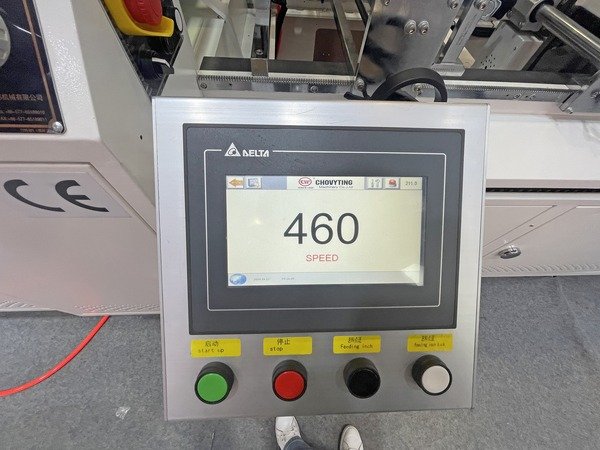
A Buyer's Checklist
At BagMec®, we guide our customers through this process. Here are the key questions we tell them to ask.
1. What is your required production speed?
- Think about your current output and your growth goals. Our Wicketer machines, for example, have a price range of $69,000 to $88,000. Higher-end models offer faster cycle times, often with servo motors that increase speed and precision.
- Our Solution: We offer models that can handle from 30 to over 100 bags per minute, depending on the level of automation and operator skill.
2. What materials will you be running?
- The machine must be able to handle your specific bag material, whether it's LDPE, HDPE, CPP, or even a biodegradable film like PLA.
- Our Solution: Our machines are built with versatility in mind. We use advanced temperature controllers and sealing technologies that work with a wide range of film types and thicknesses.
3. How much automation do you need?
- A basic machine will present the bag. A more advanced system might have a synchronized infeed conveyor, an automatic bag sealer, or an integrated printer.
- Our Solution: All our machines feature PLC control with touchscreen interfaces. We can customize them with features like IoT-enabled remote diagnostics, which allows our engineers to help you troubleshoot without an on-site visit.
4. What is the machine's build quality?
- Look for a robust frame and high-quality components. A machine built with high-carbon steel and corrosion-resistant coatings will last longer, especially in humid environments.
- Our Solution: We adhere to ISO 9001 quality management and all our machines are CE compliant. We conduct a 72-hour continuous operation stress test on every machine before it leaves our factory.
5. What kind of support does the manufacturer offer?
- Good support is essential. Does the company offer installation, training, and readily available spare parts?
- Our Solution: We offer optional on-site installation and training globally. We also provide comprehensive manuals and have a dedicated after-sales team. Our typical German client, Hans Fischer, values this level of support to meet strict EU standards.
Technical Specification Comparison
To make it clearer, here is a simplified table showing what to look for:
| Feature | Basic Machine | Advanced BagMec® Machine |
|---|---|---|
| Control System | Simple button controls | PLC with multi-language touchscreen UI |
| Motor | Standard AC motor | Energy-saving servo motors (30% less power consumption) |
| Speed | Up to 40 bags/minute | Up to 100+ bags/minute |
| Customization | Limited | Fully customizable (printers, conveyors, special sealers) |
| Diagnostics | Manual troubleshooting | IoT-enabled remote diagnostics |
| Compliance | May vary | CE Certified, ISO 9001 Quality System |
Conclusion
A Wicketer machine and the specialized wicket bags it uses are a powerful combination. They solve key challenges in high-volume, semi-automated packaging. This system boosts efficiency, improves consistency, and is adaptable to industries from bakeries to apparel.




